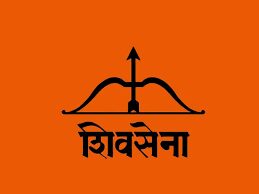Idukki farmer offers a chance to a local type of rice
The greatest types of paddy have long been found in Kerala’s beautiful, fertile plains. Ironically, however, the majority of these native species that have withstood the test of time were wiped off by the nation’s “Green Revolution,” which was intended to preserve and safeguard them.

However, a 66-year-old crippled farmer in Idukki, the state with the least amount of land dedicated to paddy production, has been working tirelessly for over 24 years to protect a traditional type of rice grown in Korangatti, a hamlet under Adimali panchayat. P G John traveled from Melukavu to Korangatti, a tribal community set on a mountain, in 1995. The colony was established in 1975 by Prime Minister Indira Gandhi to house landless Malayaraya indigenous people.
Prior to John’s arrival, the primary means of subsistence for the tribal farmers there was rice farming. They specialized in a particular type known as “Malabar,” which produced an abundant harvest each season. In Korangatti, its seeds have been handed down from generation to generation.
Over time, the majority of farmers stopped cultivating paddy because of the government’s introduction of rice subsidies, the threat posed by wild animals and natural disasters, and their inability to pay labor expenses. It also guaranteed the extinction of several native kinds.
There used to be more than 100 acres of paddy field in Korangatti. This is now less than sixty acres. John said, “Apart from my five acres, the whole property is still uncultivated. John chose to remain with paddy farming after learning about the variety’s excellent nutritional content and other advantages. He persisted in the face of a horrific accident in 2017 that cost him his left leg.
tenacious “Mundakan”
When officials from the Onattukara Regional Agricultural Research Station and the Agriculture Department visited John’s land, they discovered that the rice he was growing was a photosensitive kind called “Mundakan.”
One of the variety’s unique qualities is that it may reach a height of four to five feet in only one month if planted in July. Foliage may be trimmed by mid-August and fed to animals. It will take another month for it to develop and grow back. Therefore, before the panicle-initiation stage in October, rice varieties may be pruned twice for foliage, the speaker said.
According to John, each acre yields 2,000–3,000 kilograms of leaves. “The current price per kilogram is Rs 10. Thus, only from the greenery, one may make between Rs 20,000 and Rs 30,000,” he continues. The “Mundakan” cultivar has shown hardy against the whims of the climate. Due to the effect of excessive rain on his crop in 2019, he was only able to harvest 3 tonnes from his field instead of the expected 6 tonnes.
The variety has been given the name “Puliyan Mundakan” by John, the lone surviving guardian, which combines the names of the growing season and his dwelling. The Adimali Krishi Bhavan’s Best Paddy Farmer Award (2023–24) has been given to him.







